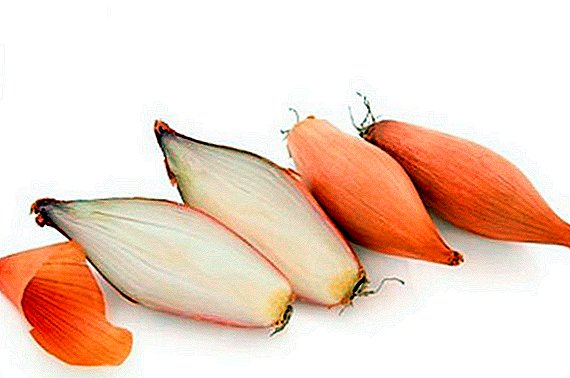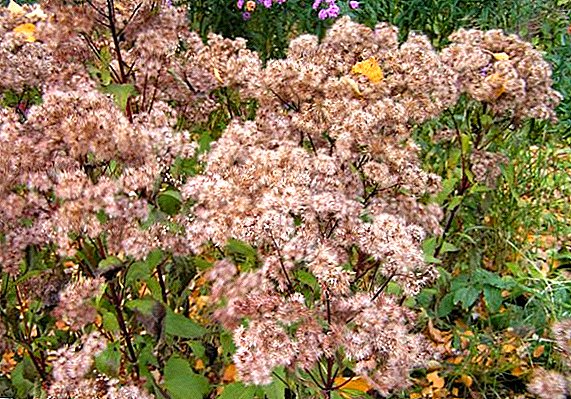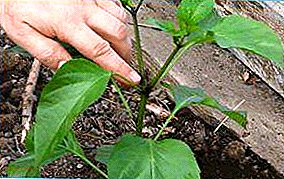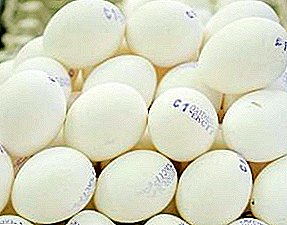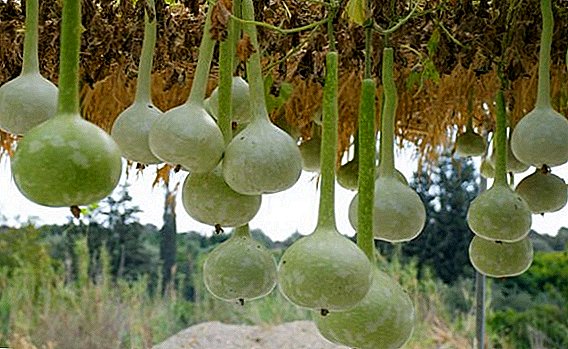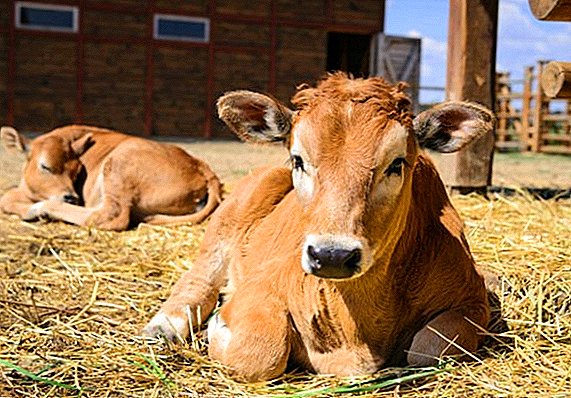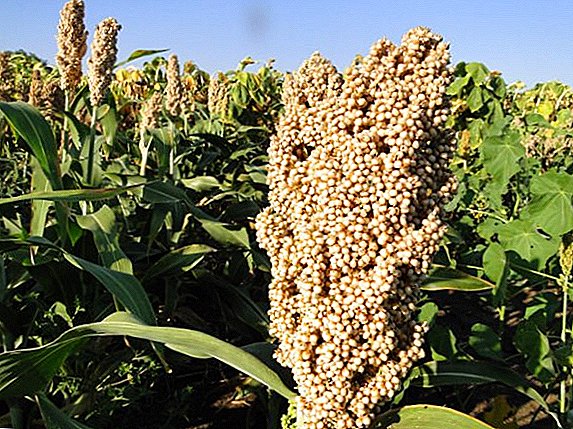 Sorghum Grain - One of the most ancient cereals, feed and food crops, which is widely known mainly as a concentrated pet food. Recently, however, this grass has gained great popularity among supporters of proper nutrition and nutritionists, who recommend that sorghum be included in the diet to those who watch their weight. The fact is that wheat and some other cereals contain a specific protein, gluten, which can cause allergies, impedes metabolism and promotes the growth of fat deposits in tissues. But sorghum contains a small amount of gluten and a lot of fiber, so the cereal has become the basis of a healthy diet all over the world and is grown in almost all countries of middle latitudes.
Sorghum Grain - One of the most ancient cereals, feed and food crops, which is widely known mainly as a concentrated pet food. Recently, however, this grass has gained great popularity among supporters of proper nutrition and nutritionists, who recommend that sorghum be included in the diet to those who watch their weight. The fact is that wheat and some other cereals contain a specific protein, gluten, which can cause allergies, impedes metabolism and promotes the growth of fat deposits in tissues. But sorghum contains a small amount of gluten and a lot of fiber, so the cereal has become the basis of a healthy diet all over the world and is grown in almost all countries of middle latitudes.
Place in the rotation
Precursors for sorghum can be assessed by three indicators. Preferably in terms of moisture reserves in the soil - winter wheat; by debris - oats and beets, but by quantity of crop residues - spring barley, winter wheat, fodder beet. Thus, the predecessors go in order:
- winter wheat;
- spring barley and corn;
- fodder beet;
- oats;
- sunflower.
 Corn - also a valid predecessor for sorghum, as it leaves moisture and nutrients, which helps the growth and development of grain sorghum. The lack of corn in this case is an excess of crop residues, which make it difficult to cultivate the soil before sowing and further care. Therefore, if corn is used as a precursor, then during the autumn period special attention should be paid to leveling the soil and planting crop residues. Sunflower can also be a predecessor, but when using it, it is imperative to carry out the destruction of the seedlings of the drop.
Corn - also a valid predecessor for sorghum, as it leaves moisture and nutrients, which helps the growth and development of grain sorghum. The lack of corn in this case is an excess of crop residues, which make it difficult to cultivate the soil before sowing and further care. Therefore, if corn is used as a precursor, then during the autumn period special attention should be paid to leveling the soil and planting crop residues. Sunflower can also be a predecessor, but when using it, it is imperative to carry out the destruction of the seedlings of the drop.There are the following patterns of alternation of crops of field crop rotations:
I.
- Black steam;
- Winter wheat;
- Winter wheat;
- Corn (grain) + sorghum at ½;
- Corn for silage;
- Winter wheat;
- Peas;
- Winter wheat;
- Sunflower.
Ii.
- Green peas;
- Winter wheat;
- Corn (grain);
- Corn for silage;
- Winter wheat;
- Sorghum;
- Spring cereals;
- Peas (grain);
- Winter wheat;
- Sunflower.
Did you know? The scheme may vary depending on the conditions of production. The only constant condition: after sorghum, only spring crops need to be sown.
Sorghum soil
 The technological scheme for the cultivation of sorghum provides for a number of preparatory activities for the soil: the destruction of weeds, leveling the surface and soil moisture. Sorghum to the soil is not too demanding, suitable heavy, light and saline soils. The most successful for sorghum are loose, moist, well warmed and aerated soil. Tillage before sowing should consist of harrowing the soil in early spring and one or two plowings.
The technological scheme for the cultivation of sorghum provides for a number of preparatory activities for the soil: the destruction of weeds, leveling the surface and soil moisture. Sorghum to the soil is not too demanding, suitable heavy, light and saline soils. The most successful for sorghum are loose, moist, well warmed and aerated soil. Tillage before sowing should consist of harrowing the soil in early spring and one or two plowings.
Soil sorghum fertilizer
Sorghum - a culture that is quite demanding of fertilizers, despite its ability to independently produce batteries from the soil. The plant responds well to mineral and organic fertilizers and consumes them very economically.
Sorghum needs almost twice, or even three times less nitrogen, phosphorus and potassium than corn. Nitrogen is necessary for the culture for intensive growth and increasing the area of hardwood surface, therefore, to obtain a good crop, you need to make high doses of nitrogen. Phosphorus is also important in the life of grain sorghum, its amount should be one and a half to two times less than nitrogen, about 90-100 kg / ha for irrigation. Potassium helps the accumulation of sugar in sorghum grains.
With a small crop yield (up to 5 tons per 1 ha), sorghum consumes potassium from the soil, thereby providing itself with this mineral on its own. If the yield of sorghum is about 7-10 tons per 1 ha, there is a shortage of potassium, so you need to make it in combination with other fertilizers in the amount of 40-60 kg per hectare.
 It is worth remembering that nitrogen fertilizers, when applied together with phosphate fertilizers, have a negative effect on seed germination. Therefore, you need to make fertilizer locally and deeper sowing seeds. If fertilizer is applied in this way, the yield will increase by 3-3.5 times than when full fertilizer is applied for plowing. Sorghum also loves organic fertilizers, such as manure, at the rate of 10-20 tons per hectare. It is best to make it in the fall when preparing the soil and in the spring, placing it aside from the seeds, locally and deeper than the sowing.
It is worth remembering that nitrogen fertilizers, when applied together with phosphate fertilizers, have a negative effect on seed germination. Therefore, you need to make fertilizer locally and deeper sowing seeds. If fertilizer is applied in this way, the yield will increase by 3-3.5 times than when full fertilizer is applied for plowing. Sorghum also loves organic fertilizers, such as manure, at the rate of 10-20 tons per hectare. It is best to make it in the fall when preparing the soil and in the spring, placing it aside from the seeds, locally and deeper than the sowing.
Important! Do not exceed the recommended dose of nitrogen fertilizers, it contributes to the accumulation of toxic cyanide substances in the green mass of sorghum, which is dangerous when growing crops for green fodder.
Selection of varieties and seed dressing
There are several options for the classification of sorghum., based on the different purpose of varieties of this cereal in culture. The most common cultivation of the three main types of sorghum: grain, sugar and broom. The latter type is used for the production of brushes and brooms, and sugar sorghum - for feeding purposes and for obtaining molasses from the stems.
Grain sorghum includes all varieties that are grown for grain. The height of their stems is from half a meter to one and a half, the grain is round and bare, easy to fall. Among the grain varieties that have high yield, cold resistance and drought resistance, emit Genichesky 11, Horizon, Krymdar 10, Saturn, Kuban Red 1677, Orange 450, Cactus, Odessa 205, as well as Stepnoy 5 hybrids, Rossorg 4 and Zernograd 8.
 For several weeks, sorghum seeds are being prepared for sowing.. They are etched to avoid the defeat of fungal and bacterial diseases and to destroy the internal microflora, which adversely affects growth. It is better to use treaters combined, such as "Fentiuram" ("TMTD" 40% + copper trichlorophenolate 10% + gamma isomer GHTSG15%), they work better than fungicides alone.
For several weeks, sorghum seeds are being prepared for sowing.. They are etched to avoid the defeat of fungal and bacterial diseases and to destroy the internal microflora, which adversely affects growth. It is better to use treaters combined, such as "Fentiuram" ("TMTD" 40% + copper trichlorophenolate 10% + gamma isomer GHTSG15%), they work better than fungicides alone.
Today, there are universal drugs that make it possible to treat the seeds with a semi-dry method. With such dressing, 5-10 l of water + combined dressing agents 1.5-2 kg + soluble glass 150 g are taken for 1 ton of seeds. It is worth remembering that with semi-dry pickling the moisture content of the seeds increases to 1%.
Did you know? Scientific experiments have shown that seed dressing of the Kuban Red varieties 1677 and Orange 450 six months before sowing increases germination from 45 to 68%.
The optimal time for sorghum sowing
A suitable sowing period is when the average daily temperature at a ten-centimeter depth of the soil is + 14 ... +16 ° C. With early sowing, seedlings are rare and overgrown with weeds. At the optimum soil temperature, the seedlings will appear on the 10-14th day after sowing, and if the temperature rises to + 25 ... +28 ° С, - on the 5-6th day.
Important! Strictly not recommended for sorghum growing from seed in early spring. When sown in cold soil, seeds will not germinate and rot.
Sorghum planting method
Among all spring grain sorghum has the smallest seeds, despite the fact that its hybrids and varieties are very different in mass of seeds. With the tendency of sorghum to intense bushiness, you need to take into account the weight seeding rate, which is calculated by the width between the rows and the density of plants per hectare. A sowing rate of about 160-170 thousand plants per 1 ha is recommended. On average, it is 10-14 kg per hectare.
Calculating the rate of sowing sorghum, should take into account field germination of seeds. Seeds of modern hybrids of good quality have high laboratory germination (from 82% to 95%), but low field similarity - 12-19%.
 Sow seeds need to wet soil, while not deeply patching. Since sorghum is a small-seed crop, with a deep sowing the shoot period will increase, the plants will appear weak and not resistant to adverse weather. The optimum depth is 7 cm. When the upper layer of the soil is dried, it is possible to embed up to 10–12 cm, with rollers being rolled after sowing. If just before sowing heavy rain fell, you can allow a depth of 4 cm. This depth is most acceptable on irrigated land.
Sow seeds need to wet soil, while not deeply patching. Since sorghum is a small-seed crop, with a deep sowing the shoot period will increase, the plants will appear weak and not resistant to adverse weather. The optimum depth is 7 cm. When the upper layer of the soil is dried, it is possible to embed up to 10–12 cm, with rollers being rolled after sowing. If just before sowing heavy rain fell, you can allow a depth of 4 cm. This depth is most acceptable on irrigated land.
A high grain yield of sorghum is obtained by observing the small width of the rows between rows - 60 and 45 cm. Reducing the width between rows with the same density allows you to distribute the plants evenly in rows, it is better to provide them with food and increase yield.
Sorghum crops care
Sorghum cultivation technology includes several phased activities. First after sowing - Rolling with ringed rollers, after which the lumps torn from the soil form a mulch layer. After 5 days after sowing, pre-emergence harrowing of sorghum with medium harrows is carried out to destroy weeds.
If after sowing the cold came again, and the sorghum on the 10th day did not reach more than 2-3 cm, the harrowing should be repeated. In the first such procedure, weeds are destroyed by 60%, and after the second - by 85%. Timely and thorough harrowing replaces one interrow cultivation.
 After prolonged rains, a crust forms on the surface of the ground, it must be destroyed in time, because it prevents the development of seedlings. Before the emergence of sprouts, the crust can be destroyed by harrowing, but if it was formed during the period of germination, then it should be eliminated with rotating hoes at an increased speed (up to 9 km / h). Further care consists in cultivating the inter-row cultivators, which also fertilize at the same time. Cultivation helps remove weeds, saturate the root system with oxygen, and retain moisture before flowering and ripening of the seeds.
After prolonged rains, a crust forms on the surface of the ground, it must be destroyed in time, because it prevents the development of seedlings. Before the emergence of sprouts, the crust can be destroyed by harrowing, but if it was formed during the period of germination, then it should be eliminated with rotating hoes at an increased speed (up to 9 km / h). Further care consists in cultivating the inter-row cultivators, which also fertilize at the same time. Cultivation helps remove weeds, saturate the root system with oxygen, and retain moisture before flowering and ripening of the seeds.
Cultivation begins as soon as the rows of sorghum are clearly visible. The depth of the first treatment should be 10-12 cm. The next is carried out in 2-3 weeks with a depth of 8-10 cm, and the third - in a few weeks after the second to a depth of 6-8 cm.
Important! When carrying out inter-row treatments with cultivators, it is necessary to keep the width of the protective zone at 10-12 cm.
Weed control and pest and disease protection
The most harmful weeds for sorghum - these are bristles, which make up 90-95% of the total weight of weeds. They are easily destroyed by sorghum harrowing in the germination phase. After germination and rooting, they become resistant to harrowing and to certain herbicides. You can destroy them "Agritox" (0.7-1.7 kg per hectare), "2.4 D" (0.5-1 kg per hectare), "2M-4X" (0.5-1.1 kg per hectare).
 Grain sorghum can infect such pests as aphid, cotton moth, white moth, wireworms, and wire guards. These insects cause irreparable damage to the crop by eating young leaves, leaf plates, stems, and grains. To combat already spreading pests, it is necessary to carry out the treatment with an Operkot (0.16 kg per hectare) and the systemic insecticide Zenit (0.2 l per hectare). During the mass reproduction of larvae pests - spray the drug "Bi-58".
Grain sorghum can infect such pests as aphid, cotton moth, white moth, wireworms, and wire guards. These insects cause irreparable damage to the crop by eating young leaves, leaf plates, stems, and grains. To combat already spreading pests, it is necessary to carry out the treatment with an Operkot (0.16 kg per hectare) and the systemic insecticide Zenit (0.2 l per hectare). During the mass reproduction of larvae pests - spray the drug "Bi-58".
If several larvae are found on a single plant, repeat spraying after 15 days with the biological preparations “Hapelin” (0.8–1.0 kg per hectare), Dendrobatsillin (0.5–1.0 kg per hectare), and Lepidocide ( 1.5-2.0 kg per hectare). Of the sorghum diseases most exposed leaf spots, smut, rust, stem rot, gelmintosporiozu, fusarium and alternariosis, which reduce the crop.
To prevent this, it is necessary to destroy crop residues in a timely manner, remove damaged areas, cultivate the soil, pickle seeds, and apply potash and phosphate fertilizers, since it is impossible to grow a good harvest of sorghum without complying with these agrotechnical measures.
Sorghum Harvesting
 Sorghum grain is usually not showered; it is harvested when the grain is fully ripe. At the same time before cleaning determine the humidity. The peculiarity of sorghum is that the grain usually matures in a panicle, when the whole leafy mass is still green and has a leaf moisture content of 60%, and the stems are 70%. The moisture content of the grain should be 25-30%, then you can start cleaning.
Sorghum grain is usually not showered; it is harvested when the grain is fully ripe. At the same time before cleaning determine the humidity. The peculiarity of sorghum is that the grain usually matures in a panicle, when the whole leafy mass is still green and has a leaf moisture content of 60%, and the stems are 70%. The moisture content of the grain should be 25-30%, then you can start cleaning.
Harvest direct harvesting using harvesting machines. In order to avoid crushing the grain during threshing, the speed is reduced to 500-600 per minute. In order to get dry grain, it is necessary to carry out separate cleaning, especially for early ripening varieties. A ZHN-6 header is used, which bevels a mass at a low cut (up to 15 cm) and folds it into rolls.
Two weeks after the grain and greens are dried in rolls, threshing is carried out by a combine. Green sorghum is harvested while the panicle is thrown away, leaving a cut of 10-12 cm.
Important! Collected green mass must be fed after its four-hour wilting to prevent possible poisoning with cyanide substances.



